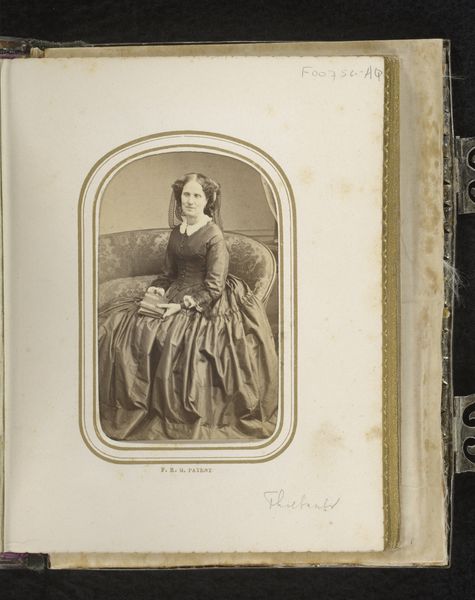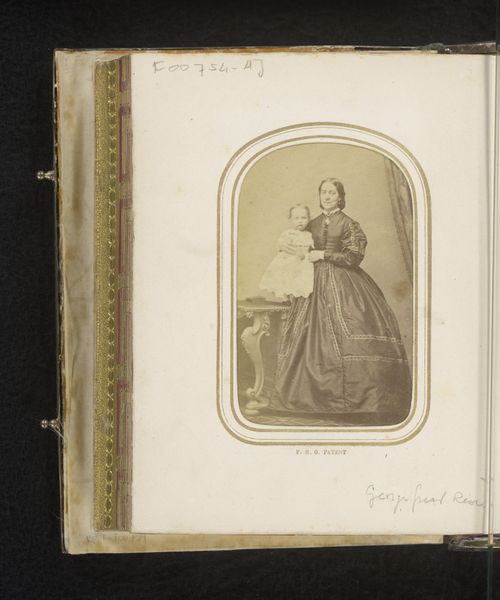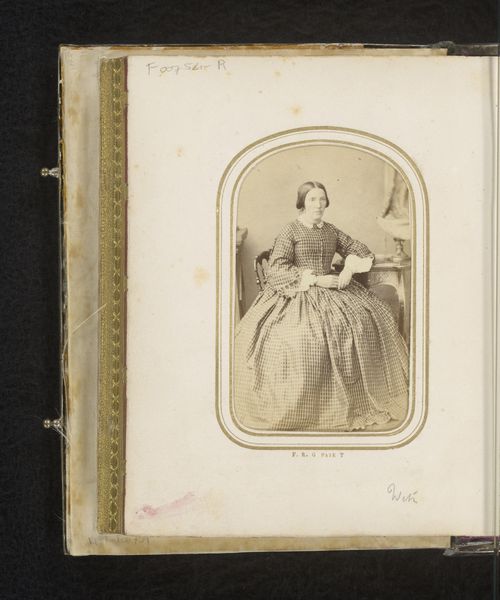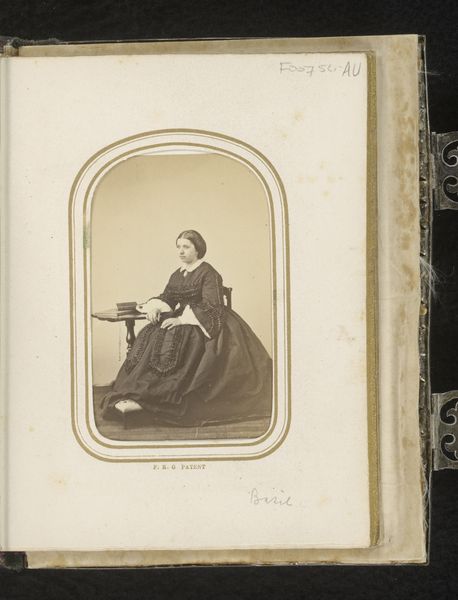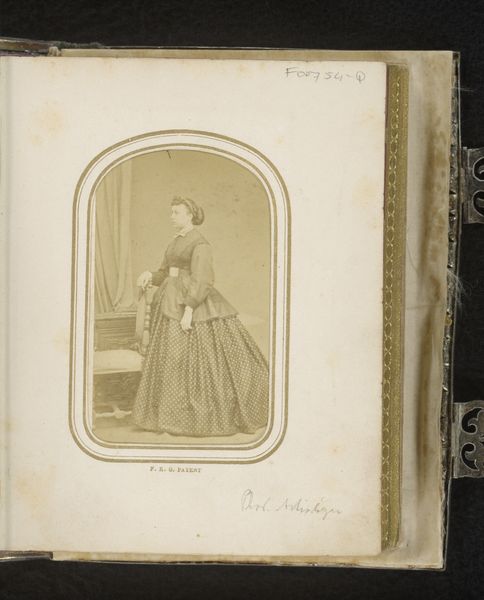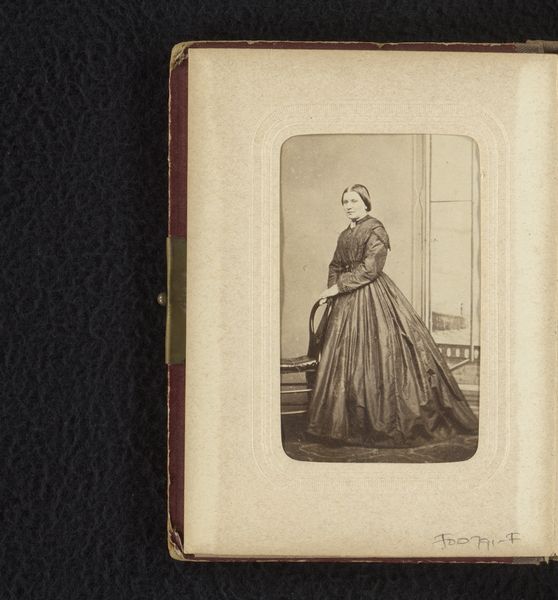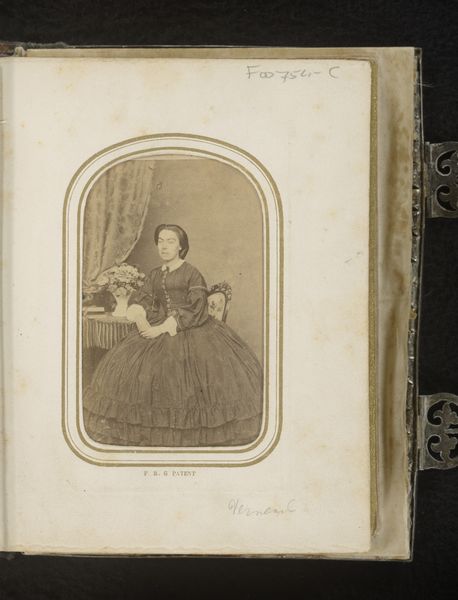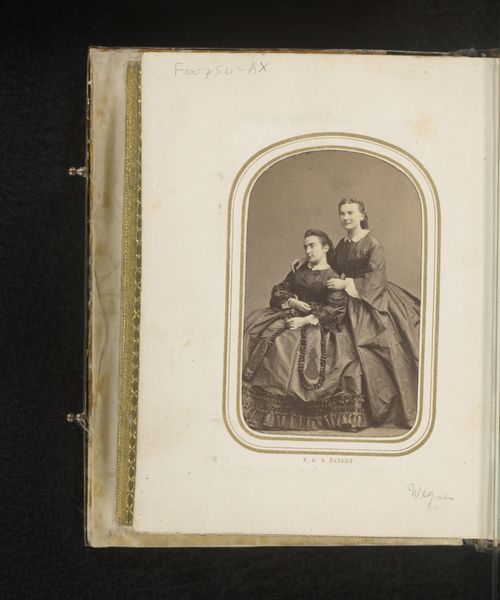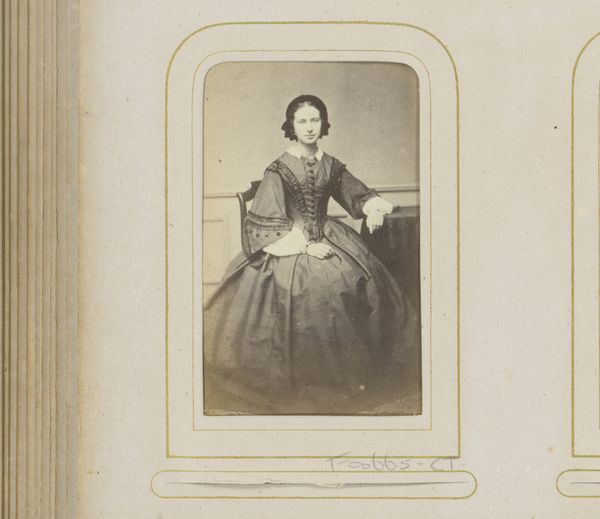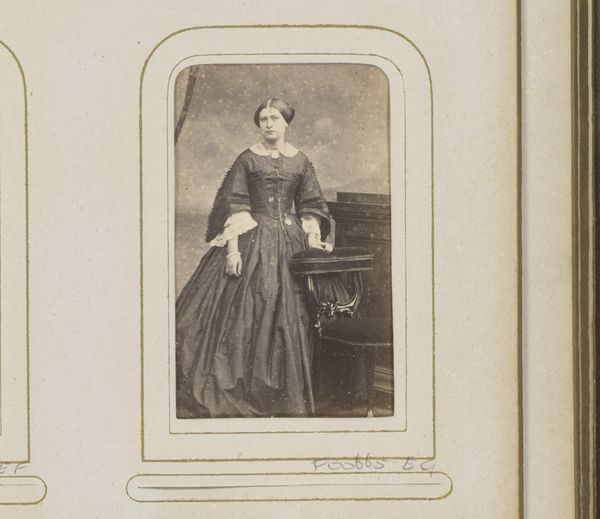
photography, albumen-print
#
portrait
#
photography
#
genre-painting
#
albumen-print
Dimensions: height 86 mm, width 52 mm
Copyright: Rijks Museum: Open Domain
Editor: This is an albumen print dating from around 1855 to 1880, entitled "Portret van een staande vrouw," attributed to Achille Ernest Mouret. The woman's expression seems rather serene, almost melancholic. What underlying stories or meanings do you think are woven into this image? Curator: It’s fascinating how a seemingly straightforward portrait can act as a cultural vessel, isn't it? Consider the elaborate gown. The heavy fabric and formal cut suggest status, but also restriction. Is it a celebration of prosperity, or a visual encoding of societal expectations? Also, the staged backdrop - a hint of nature controlled by architecture. What does it tell us about the era's relationship with the natural world, about the desire to tame and frame it? Editor: I hadn’t considered the backdrop in that way. It’s almost like she’s been placed in a theater set, not really in nature at all. Curator: Precisely! The composition steers us towards a certain performance of self. The chair behind her isn’t for sitting, but rather functions as another prop – another signifier of status. The visual language here creates a dialogue about identity, performance, and societal position. Do you think her 'serene' expression could be masking something else, a quiet resistance maybe? Editor: It definitely complicates my initial reading. I was so focused on her dress that I overlooked everything else as just… background. Curator: It's all interwoven, the visual vocabulary forming a compelling narrative. We look at this image now, across time, and decode it, layering our understanding on top of what was initially intended. It’s cultural memory unfolding before our eyes. Editor: This makes me appreciate the layers within seemingly simple portraits. It’s more than just capturing a likeness. Curator: Absolutely, the resonance lies in understanding those encoded signs.
Comments
No comments
Be the first to comment and join the conversation on the ultimate creative platform.
